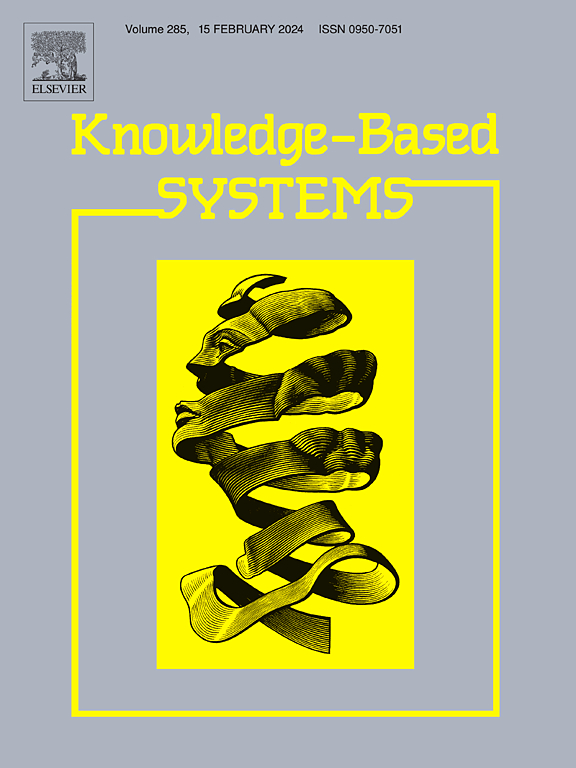基于内在图像分解的深度展开网络,用于平锐化
IF 7.2
1区 计算机科学
Q1 COMPUTER SCIENCE, ARTIFICIAL INTELLIGENCE
引用次数: 0
摘要
全色锐化旨在通过融合全色和低分辨率多光谱图像来获得高分辨率多光谱图像。然而,目前基于深度学习的方法缺乏合理的可解释性,并受到某些光谱和空间失真的影响。为了解决这些问题,我们提出了一种基于内在图像分解的可解释深度展开网络,称为 DUN-IID。IID 将多光谱图像分解为反射分量和阴影分量,从而形成一个新颖的变分优化函数。反射分量和阴影分量分别有效地反映了光谱信息和空间信息。这种解耦策略通过防止光谱和空间信息之间的干扰来提高特征保真度,从而在融合过程中实现空间重建和光谱校正的独立优化。优化函数采用半二次分裂法求解,并展开为端到端 DUN-IID 算法,其中包括两个用于先验学习的原始更新块和两个用于重构的双重更新块。为了减轻中间阶段信息丢失的影响,我们将源图像引入两个原始更新块进行信息增强。因此,反射和阴影基元更新块分别被定制为多尺度结构和带感知结构。此外,我们还采用了多维度关注机制来改进特征表示。广泛的实验验证了我们的方法优于其他最先进的方法。本文章由计算机程序翻译,如有差异,请以英文原文为准。
A deep unfolding network based on intrinsic image decomposition for pansharpening
Pansharpening aims to obtain high-resolution multispectral images by fusing panchromatic and low-resolution multispectral images. However, current deep learning-based methods lack reasonable interpretability and suffer from certain spectral and spatial distortions. To address these issues, we propose an interpretable deep unfolding network based on intrinsic image decomposition, called DUN-IID. IID decomposes the multispectral image into a reflectance component and a shading component to formulate a novel variational optimization function. The reflectance and shading components effectively reflect spectral and spatial information, respectively. This decoupling strategy enhances feature fidelity by preventing interference between spectral and spatial information, enabling independent optimization of spatial reconstruction and spectral correction during fusion. The optimization function is solved by the half-quadratic splitting method and unfolded into the end-to-end DUN-IID, which consists of two primal update blocks for prior learning and two dual update blocks for reconstruction. To alleviate the effects of information loss across intermediate stages, we introduce the source images into two primal update blocks for information enhancement. Therefore, the reflectance and shading primal update blocks are customized as a multi-scale structure and a band-aware construction, respectively. Besides, the multi-dimension attention mechanism is adopted to improve feature representation. Extensive experiments validate that our method is superior to other state-of-the-art methods.
求助全文
通过发布文献求助,成功后即可免费获取论文全文。
去求助
来源期刊

Knowledge-Based Systems
工程技术-计算机:人工智能
CiteScore
14.80
自引率
12.50%
发文量
1245
审稿时长
7.8 months
期刊介绍:
Knowledge-Based Systems, an international and interdisciplinary journal in artificial intelligence, publishes original, innovative, and creative research results in the field. It focuses on knowledge-based and other artificial intelligence techniques-based systems. The journal aims to support human prediction and decision-making through data science and computation techniques, provide a balanced coverage of theory and practical study, and encourage the development and implementation of knowledge-based intelligence models, methods, systems, and software tools. Applications in business, government, education, engineering, and healthcare are emphasized.
 求助内容:
求助内容: 应助结果提醒方式:
应助结果提醒方式:


